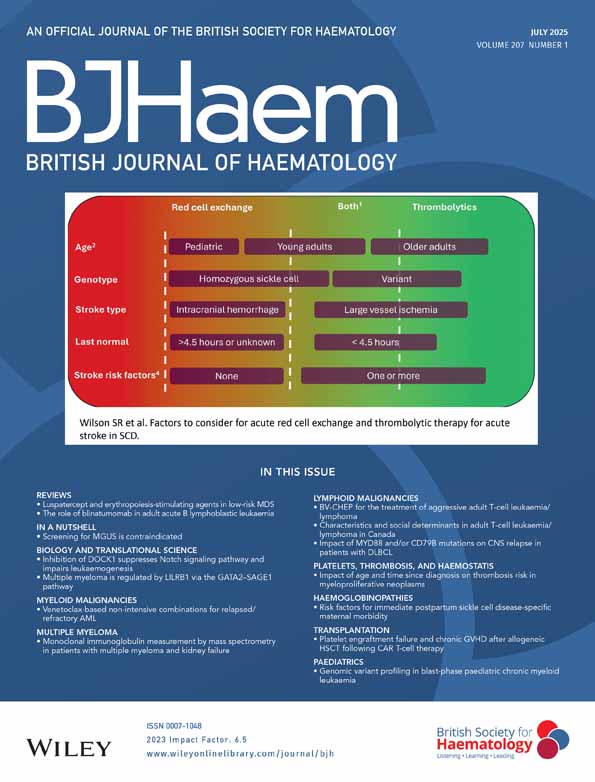Autosomal dominant type 1 von Willebrand disease due to G3639T mutation (C1130F) in exon 26 of von Willebrand factor gene: description of five Italian families and evidence for a founder effect
Abstract
Twenty-four apparently unrelated Italian patients with autosomal dominant type 1 von Willebrand disease (VWD) and a clear autosomal pattern of inheritance of bleeding symptoms were screened for the C1149R and C1130F mutations. None of the patients had the C1149R mutation; three patients and four affected relatives were heterozygous for the C1130F mutation. The mutation appeared to be linked to a single haplotype, defined by five genetic markers [variable number tandem repeat (VNTR) I and II in intron 40, RsaI in exons 13 and 18 and HphI in exon 28], suggesting a founder effect. The patients responded well to desmopressin infusion. The C1130F mutation might have a dominant negative effect on the secretion of the normal protein that desmopressin would appear to overcome.




